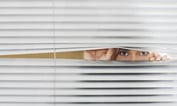 (Image: Shutterstock)
(Image: Shutterstock)
Exchange-traded funds continue to be an important tool for investors, but along with other investments they have taken a hit amid the market volatility we’ve seen this year, according to Heather Fischer, vice president of mutual fund, ETF and 529 platforms at Charles Schwab.
In a conference call with reporters Friday about strategies for investing in a late-phase bull market, she pointed to findings from the firm’s annual ETF investor study conducted earlier this year. The majority of ETF investors (61%) said they expected market volatility to increase in mid-2019, and close to half (44%) said they planned to put more money into ETFs as a result, she noted.
“Even prior to the most recent market moves,” 51% of study respondents said they increased their allocations to ETFs in the prior six months “as a result of increased market volatility,” she pointed out. (The study was conducted by Logica Research Feb. 20-March 4.) And among those investors who expected increased volatility in the market, 73% expected to increase their ETF investments in the next year and 37% said they would consider placing their entire investment portfolio, excluding cash, into ETFs in the next year, she noted.
“One of the reasons why they respond this way … is we continually found that ETFs serve a unique role as the foundation of a portfolio and as a vehicle that enables investors to be very nimble, which is critically important in times like this.”
She went on to compare flows on Schwab’s platforms between the week of July 29, which was relatively calm, to the week of Aug. 5, which included market volatility. Flows were up 24% overall week-over-week from $783 million to $974 million, she said, noting there was also “one of the biggest jumps in U.S. equities,” which rose from $216 million to $481 million. In commodities, “flows more than tripled week-over-week,” from $65 million to $227 million, she said, noting they were “all positive flows.”
During the week of Aug. 5, Schwab saw its RIA clients “outpace retail clients by quite a bit when it came to flows into” U.S. equities, she said, noting RIA flows were at $304 million compared to $177 million in retail client flows, which was “somewhat similar to what we saw the previous week,” when RIA clients were at $162 million in flows compared to retail client flows of $54 million.
But she said: “The opposite was true for commodity ETF flows,” where retail client flows accounted for 88% of overall flows — $199 million vs. $28 million for RIA flows. In the week of July 29, RIA client flows outpaced retail client — $39 million compared to $26 million.
Schwab has also “seen a bit of a downturn in fixed income ETF flows this year so far,” she told reporters. By the end of July 2018, Schwab had seen about $8.8 billion in flows on its platform. But through July 2019, “we’re a little under that,” at $7.7 billion, she said. That trend continued through the volatility of the week of Aug. 5: “During some of those major market swings, we saw $509 million in fixed income ETF flows on our platform” compared to $544 million a week earlier, she said.









 August 16, 2019 at 04:58 PM
August 16, 2019 at 04:58 PM











